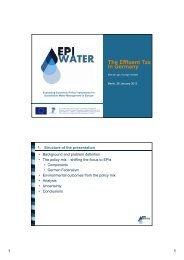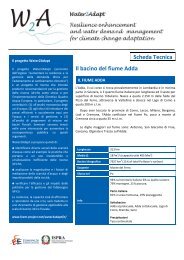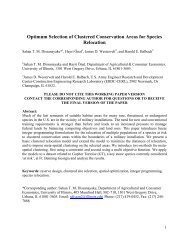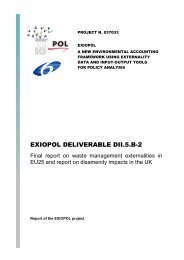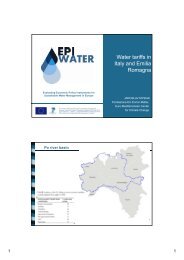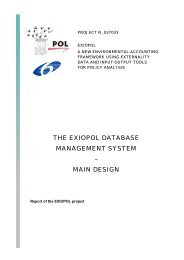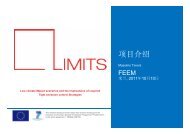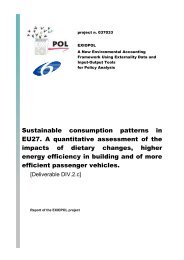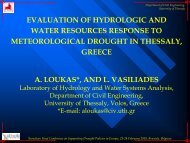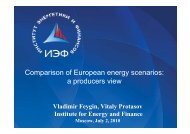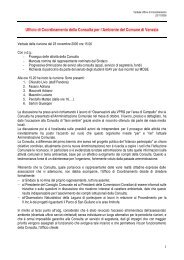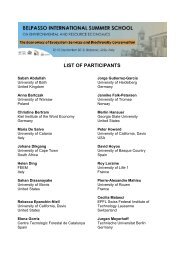Gulf and European Energy Supply Security - Feem-project.net
Gulf and European Energy Supply Security - Feem-project.net
Gulf and European Energy Supply Security - Feem-project.net
Create successful ePaper yourself
Turn your PDF publications into a flip-book with our unique Google optimized e-Paper software.
<strong>Energy</strong> <strong>Security</strong>: Potential for EU-GCC Cooperation<br />
Figure 16: International Gas Trade<br />
Source: POLES model, LEPII, SECURE <strong>project</strong><br />
24<br />
3.3. World Coal <strong>Supply</strong> <strong>and</strong> Trade<br />
In spite of resources that are more widely<br />
distributed than those of oil <strong>and</strong> gas, international<br />
coal trade doubles over the <strong>project</strong>ion period in the<br />
Muddling Through (Figure 18) scenario. The high<br />
volume of trade reflects the strong comeback of<br />
coal in a double context of relative scarcity <strong>and</strong> high<br />
prices of oil <strong>and</strong> gas, accompanied by only moderate<br />
GHG emission constraints. The situation changes<br />
in the Europe Alone <strong>and</strong> Global Regime scenarios.<br />
Coal trade remains almost stable during the period<br />
in the Europe Alone scenario <strong>and</strong> it even decreases<br />
compared to current levels in the Global Regime<br />
scenario.<br />
Europe remains the major importer, representing<br />
more than 80 percent of <strong>net</strong> imports during the<br />
whole period in all scenarios except in the Europe<br />
Alone case, in which other world regions continue<br />
to intensively use coal. However, <strong>European</strong> coal<br />
imports shrink from the Muddling Through scenario<br />
to the others, due to changes in the structure of the<br />
electricity generation <strong>and</strong> final consumption in favor<br />
of decarbonised energies <strong>and</strong> cleaner technologies.<br />
The four main exporting regions are North<br />
America, the Pacific, Africa <strong>and</strong> the CIS. Because of<br />
the rapid growth in consumption, Asia becomes a<br />
<strong>net</strong> importer late in the period. Their share remains<br />
nearly stable, while the volume diminishes in the<br />
Europe Alone <strong>and</strong> Global Regime scenarios.<br />
3.4.Consequences for Europe’s <strong>Energy</strong><br />
Dependence <strong>and</strong> Value of Imports<br />
The scenarios presented above result in very<br />
different profiles for energy imports <strong>and</strong> dependence.<br />
The Muddling Through corresponds to the scenario<br />
with higher consumption, imports, dependence rate<br />
<strong>and</strong> value of energy imports. While Europe’s global<br />
import dependence rate was of 50 percent in 2005<br />
<strong>and</strong> the value of energy imports of 236 G€ in 2005,<br />
these figures rise respectively to 57 percent <strong>and</strong> 351<br />
G€ in 2020 <strong>and</strong> 53 percent <strong>and</strong> 491 G€ in 2050 (Table<br />
3, upper row).<br />
The Europe Alone scenario presents interesting<br />
characteristics, as it is the one with the lowest<br />
level of energy imports in terms of volume <strong>and</strong><br />
dependence rate. This can be easily explained as this




